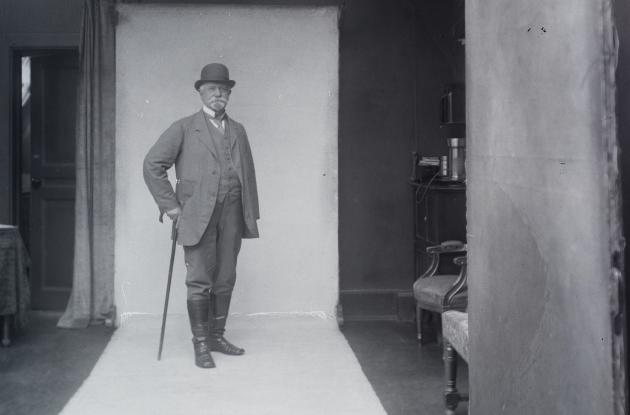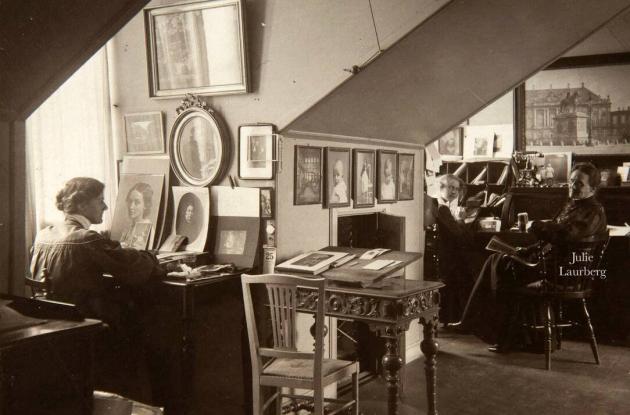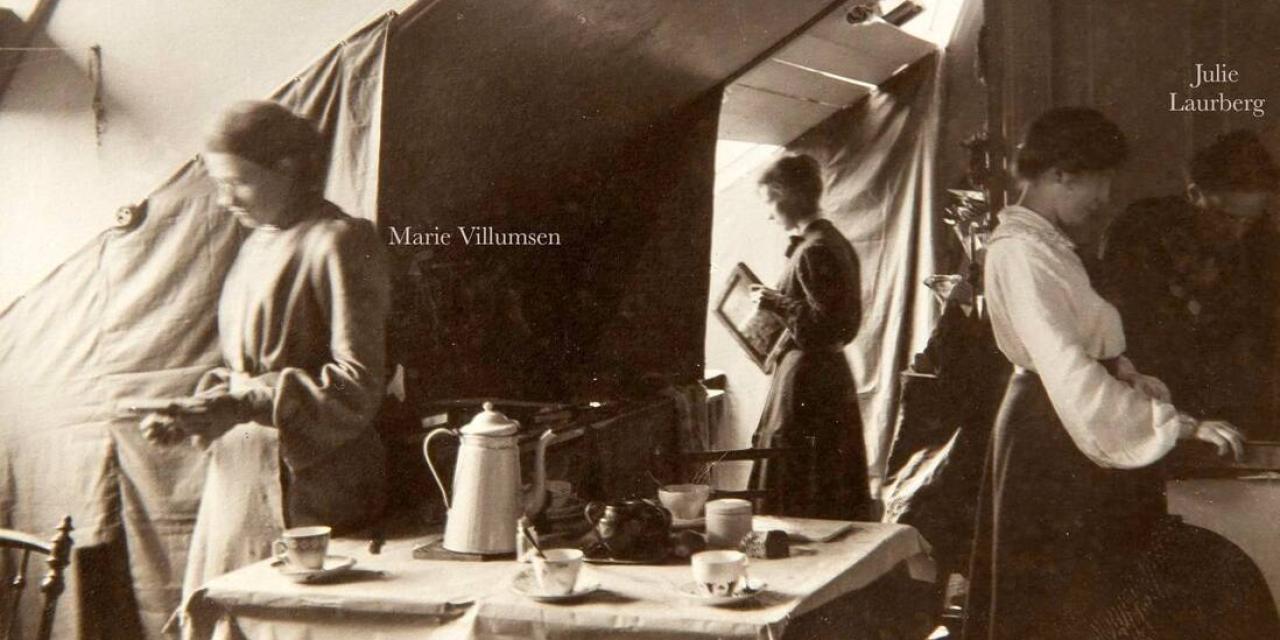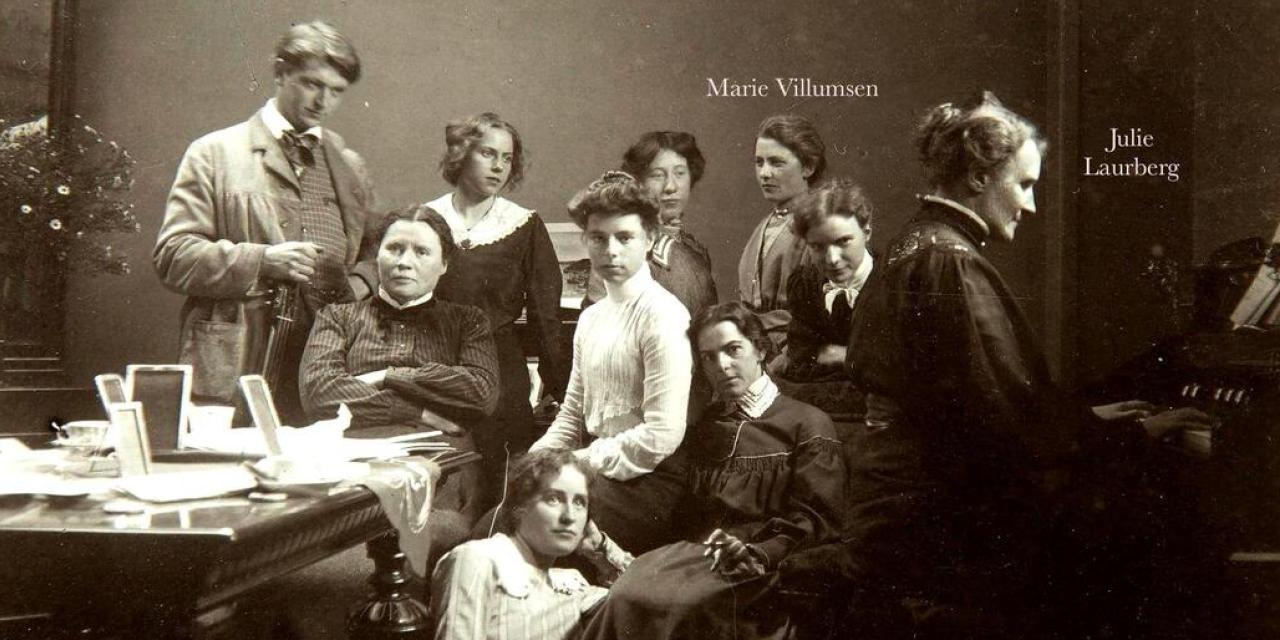In the studio at Kongens Nytorv
Laurberg and Gad were among the many women who established themselves as photographers in the late 19th century.
Laurberg opened a studio in 1895 in Magasin du Nord's building at Kongens Nytorv. The company advertised that it was possible to be transported up there, because the building had a completely new phenomenon, an elevator, installed. Like other studios, the studio had a reception room, room for recording, darkroom and for processing negatives and positives.

Photo: Andrew Danemans samling
Close to a quarter of all photographers in the period 1860-1900 were women. In Copenhagen the number was higher, in fact there were 43% women in the photography profession in 1900. It was a new profession without conservative traditions, so it was easier for women to establish themselves and get employment. It was also said that women's aesthetic sense and their special contact with children was what drew them into photography. In fact, their business talent and, for many of them, their special technical ability probably played a greater role in their success.
... the one employee has grown to sixteen - sixteen happy and hard-working young girls who stand up to their employers and are well under the care and consideration shown to them
The 43% also included all the "invisible" employees in the studio. At Laurberg and Gad in 1920, sixteen women were engaged in developing negatives, retouching, developing paper images and retouching them. There were probably also some of the employees who operated the cameras and took photographs, just as Laurberg and Gad were involved in the entire process from recording to finished image.
The business card photography collection
See business card photographs taken by female photographers from all over the country.
Laurberg and Gad in Digital collections
Royal Danish Library has a collection of 4,400 negatives by Julie Laurberg and Franziska Gad. It has been digitised and made available in Digital Collections. Here you can also find many paper images, both portraits and architectural images, from Laurberg and Gad's studio.


